
Cityscope by Marco Hemmerling
German designer Marco Hemmerling has created a faceted installation in Cologne, Germany, called Cityscope that reflects fragments of surrounding buildings.
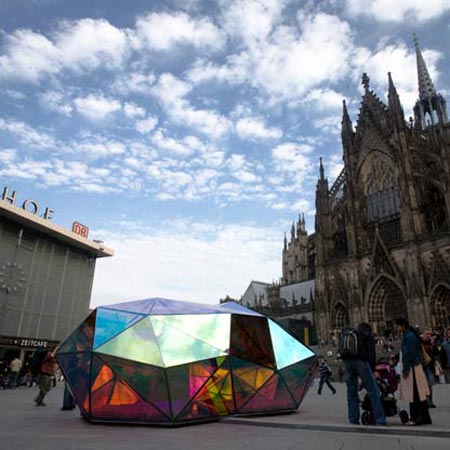
The installation was created for architectural festival Plan08 in September.
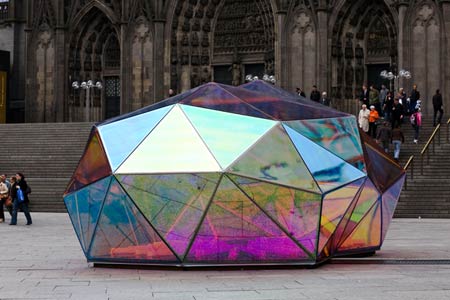
At night the reflective, colour-distorting film on its surface becomes transparent and the structure is lit from within.
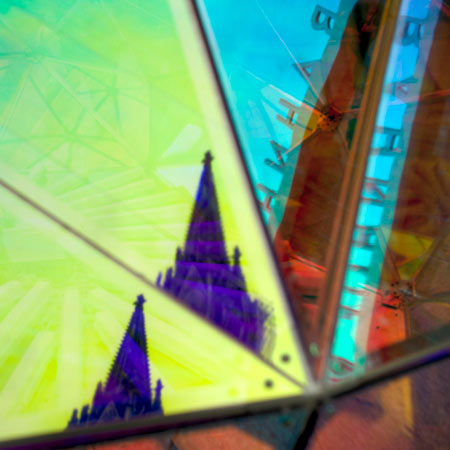
The following is from Marco Hemmerling:
--
Cityscope - urban kaleidoscope
The installation „cityscope“ deals with the fragmented perception of urban spaces. The bevelling structure can be seen as an urban kaleidoscope, that reflects fragmented views on the city and composes at the same time a three-dimensional image of the surrounding facades.

While moving around the sculpture the images, that reflect on the triangulated envelope, continuously change. In that way the beholder becomes an integral part of the installation and its complex reflections.
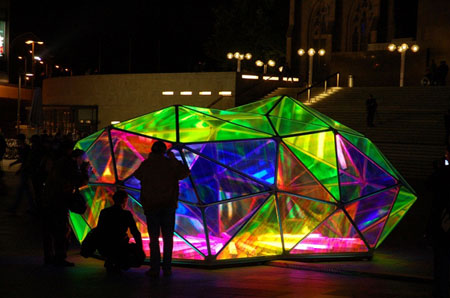
The radiant foil, that is applied to the outer skin of the sculpture reflects, dependent on the daylight situation and the position of the beholder, the light in different colours.
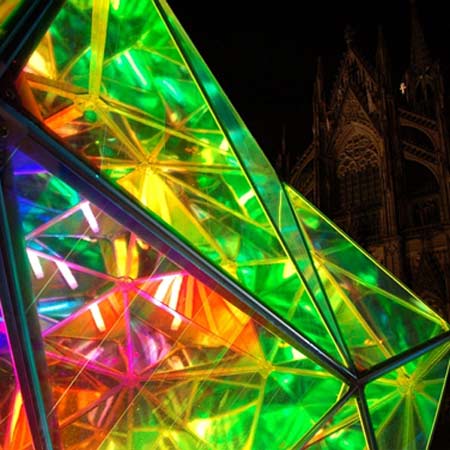
The colour-transformation generates an intentional alienation, that reinforces the idea of a fragmented perception.
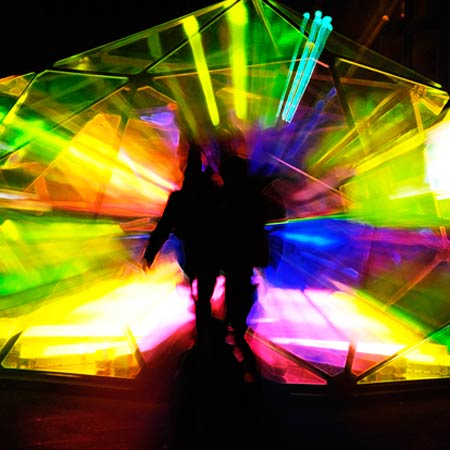
Like the facades of a city, the specular envelope becomes transparent in the night, when the installation is illuminated from the inside. The appearance changes in another transformation-process into complementary colours and the inside of the installation can be experienced.
A sophisticated perception of urbanity is often limited to the ground floor level. „cityscope“ tries to open the perspective by concentrating different and unusual views of the urban surroundings. The crystal-like installation is positioned in front of the main station in Cologne, a highly frequented urban square, that allows different angles of vision and supports at the same time the interaction of the beholder with the installation.
The project was designed digitally in 3D from the beginning, using Rhinoceros Software. The final shape is related to the site and reacts to the height and proportions of the surroundings (station, church, dome...). The production of the elements was realized by digital fabrication technology (CAD-CAM) for both the aluminium framework and the synthetic elements of the bevelling skin. The light installation was programmed with different sequences in order to support a dynamic perception of the sculpture by night.